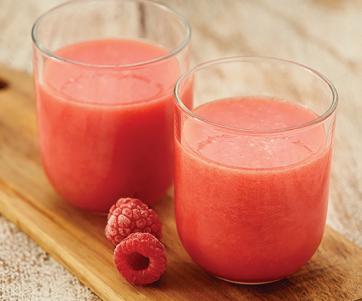
3 minute read
Eating on a budget and other tips
Eating on a budget
Budgeting
Advertisement
Remember: it is often a lot cheaper to cook meals from scratch yourself than buying ready-made or take away meals. For example:
l A homemade cheese, tomato and ham sandwich using 2 slices of wholemeal bread costs 48p, but the same sandwich in a supermarket would cost £2.30, saving you £1.82.
l You could make your own ‘meal deal; with the same type of sandwich, an apple and a drink of cold tap water for only 68p per person. A similar meal deal in a supermarket would cost £3.00. You would save £2.30 per person by making your own.
l Scrambled egg on toast costs only 22p per serving.
l A homemade cottage pie made with minced beef and served with cooked mixed frozen vegetables costs 50p per serving. A supermarket own brand equivalent ready meal, served with cooked mixed frozen vegetables, costs £1.24 per serving. You would save 74p per person by making your own.
l A hot baked potato served with a small tin of tuna fish costs 98p per serving. You can lower the cost even more if you replace the tuna fish with baked beans. That would cost only 26p per person.
There are many more meal ideas too, but the list gives you a few ideas.
Other tips
l Write a shopping list before you shop and don’t be tempted to buy foods you do not really need. ‘Buy one get one free’ deals are not a bargain if you do not need them in the first place! l Plan your meals for the week ahead so that your children get a good variety of foods.
l Many foods will stay fresh for longer if stored correctly. Tinned and packet foods should have a ’best before’ date stamped on them. Some fresh fruit and vegetables such as; potatoes need to be stored in a cool dark place, whilst others like tomatoes and lettuce should be kept in the bottom of the fridge. They may have a ‘use by’ date on them which you should follow. A loaf of bread should stay fresh for 2 days, but even longer if you freeze it and then defrost only the number of slices you need each day.
For more information on how to store food and leftovers please visit the website:
www.nhs.uk/live-well/eat-well/how-to-store-food-and-leftovers/
l Don’t waste anything. ‘Use by’ dates are the date by which foods should be eaten, but ‘best before’ dates are the date when foods are at their best. This does not mean they cannot be eaten after that date, just that they may not be as tasty. l Use any leftover meals the next day, making sure you store them in a fridge overnight. If reheating foods, make sure they are piping hot before serving. Do not reheat cooked food more than once.
l If you have a freezer, it is good to know that many foods and meals can be frozen instead of throwing them out. This includes for example; fresh milk, cheese, cooked meals, raw and cooked meat and fish, many vegetables and fruits, bread.
Search online if you are not sure if the food can be frozen or not. l Try to freeze leftovers to use at another time if you have a freezer. Make sure you label and date the food being frozen, so you know what it is and how long it has been in the freezer. Many foods can be safely frozen for months. Thaw thoroughly before using. l Buy cheaper supermarket own label brands – the food often tastes the same as the more expensive brands. l Reduce the portion sizes served. A child’s stomach is about the size of their fist.
This is the size of portion that children should be eating. Do not be tempted to give them an adult size portion, but stick to a ‘Me Size’ meal instead. If it helps, try to serve children’s meals on a smaller size plate. l Try to limit the number of take away meals you have. They are often expensive, less nutritious and served in very big portions. l Try and involve your child(ren) in cooking. They are more likely to try something new if they helped to make it. Cooking is a great way of learning something new.





